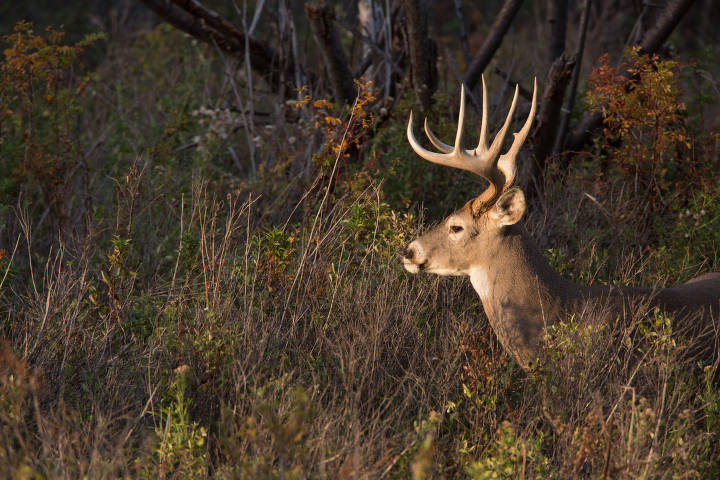
By Jim Dickson | Contributing Writer
Big game in the South means black bear, wild hog, and deer, and there is no time like the present to begin planning ahead for 2024
The tradition of hunting them is as old as the South itself. Everyone hunted in the pioneer days. Back then we also had woods buffalo, elk, and lots of wolves. Wolves were hunted as they preyed on people at times, and they could always be depended upon to prey on the settler’s livestock. Today we have the smaller coyote but a pack of these stalked and attacked a Georgia hunter recently.
Individuals hunted to put meat on the table and to get hides to sell and for the family to use. As the South grew more prosperous the large organized hunts became a place where men met and got to know one another prior to doing business. That tradition lives on today as the hunts continue to forge friendships and business deals on the side.
Bear hunting has risen in popularity with the great increase in the black bear population. Once considered more dangerous than today, years of intensive hunting have given them an attitude adjustment and they are much more afraid of people now than they were then. One of the more elusive species, they are also extremely intelligent.
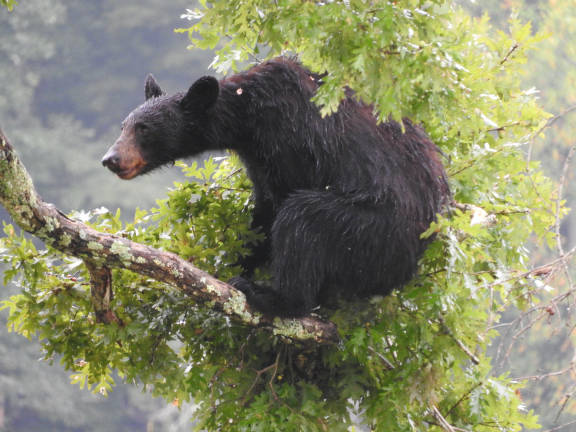
Bears are hunted with hounds where legal. Others are hunted like deer and many are taken as they walk past a deer hunter’s stand.
Dealing with a big downed bear is like dealing with a big fat hog. It can be a lot of work. I remember one Georgia mountain man telling his friends how he had shot a big bear and he never intended to do that again as it took five men to get that bear out of the cornfield! Veteran hunters would have skinned and cut it up into packing out size pieces where it lay.
A black bear shot on a hillside will often roll to the bottom where he may suddenly pull his famous disappearing act. Hitting a vital spot while the bear is rolling is difficult for most hunters.
Proven calibers include the .44-40, .44 Magnum, 30-06, and 45-70. Calibers under .30 caliber such as the .270 have proved unreliable bear stoppers.
Wild Hogs
Wild hogs are a rapidly spreading problem for farmers that cause significant crop damage as well as adversely impacting native game species nationwide. They haven’t been that much of a problem in the Smokey Mountains as we have a long history of hunting them. Even during the period right after WWII farmers often notched their pigs ears to mark them as their own property and sent them out in the woods to fatten up on acorns and anything else they could find. Then when cold weather signaled it was time to butcher the animals, they would hunt down their pigs and shoot them.
These days, that practice has gone, and many are taken by deer hunters when they venture past their stand.
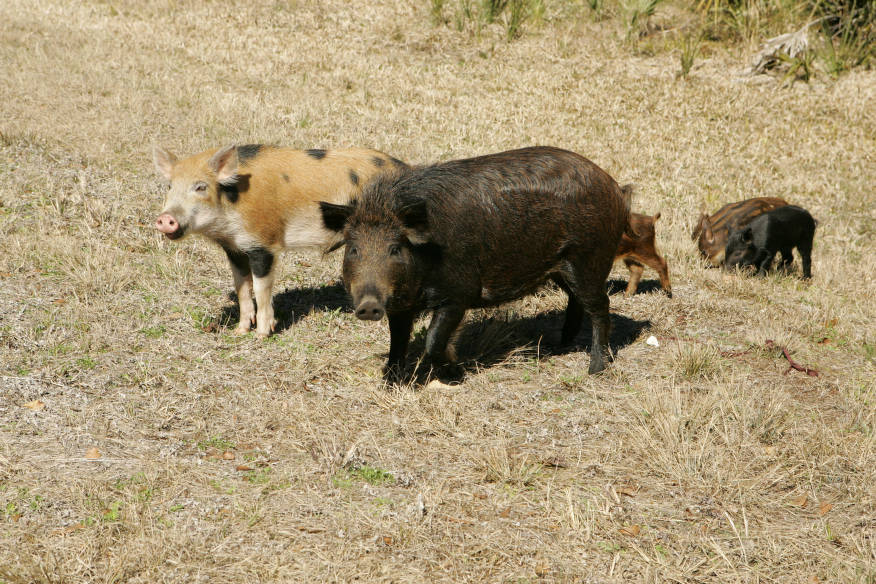
Hogs can be very elusive when they become crop raiders and the use of dogs to hunt them is highly recommended although it can be dangerous for the dogs. The use of thermal sights and night vision equipment enables you to pick them off at night when they come out to devastate a field of crops. A good semi-auto with a high capacity magazine is needed as you don’t want any wild hog to escape back to the tree line and disappear to come back later.
This is not sport hunting. It is crop protection against a foe that can wipe a farmer out in one night. Silencers are very popular for this work as no one likse being awakened in the middle of the night by gunshots. They also open a lot of farms for hunting once the farmer knows that you will be quiet about your business.
Because hogs are such prolific breeders, and the young are so abundant you see more smaller ones and that has led to the AR-15 in 5.56mm becoming a popular rifle for shooting them. That may be fine for little pigs, but I know of at least three wild hogs that scaled over 1,000 pounds.
Since they can be so hard to find when you are hunting them a lot of people think that they will always run from you. Not always. A boar with a sow and piglets may be more likely to charge you than run away. I have seen a small boar put a fat man up a tree faster than I ever thought possible. I have also had a head to head run in with a wild hog at night that made the mistake of trying to attack me.
For hogs I would recommend a 7.62mm NATO semi-auto with sufficient high capacity magazines to ensure that you can deal with as many as possible.
Since hogs sometimes carry diseases that can be transmitted to humans, you should always wear rubber gloves when processing the carcass and handling the meat until it is cooked. Pork, like bear meat, can also harbor the trichinosis parasite so it must always be cooked until well done unless you plan on dying with trichinosis worms eating your brain. The damage these worms do to infected bear and hog brains may well be responsible for the aberrant and dangerous behavior these species sometimes display.
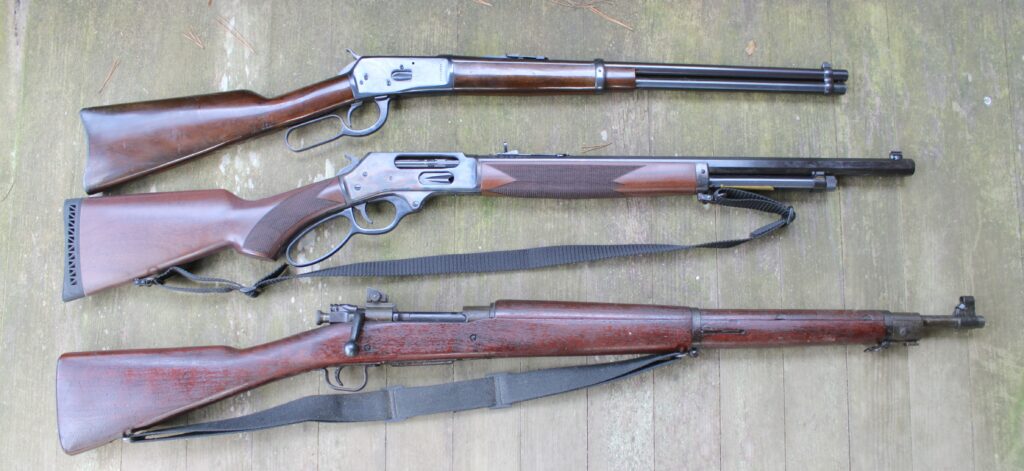
Deer Hunting
Deer are our other big game species in the South and there are three main methods of hunting.
The first is hunting from a stand. The stand is typically erected overlooking a deer trail that the deer use to go from their bedding area to their feeding area and back. This is the easiest and most productive method of hunting them. Pre-season scouting to learn the deer’s pattern of movement is a vital element for success. Bear in mind that deer are acutely aware of the deer season and often seem to know exactly when it opens. I have seen them change their routes suddenly on opening day before the first shots could ring out.
The second method is often used in areas where it is legal. Running the deer past the hunter’s stand with dogs sounds like a sure fire method. While it can be very productive, success is by no means assured. You need a pack of dogs that will press the deer hard and then there is no guarantee that they will run in front of a hunter’s stand. These deer drives require multiple hunters in stands and a good pack of dogs with their handler to work. It is common for such hunts to allow buckshot only and sometimes the deer hunting is interspersed with a dove shoot or even duck hunting as these hunts are often multi-day affairs where a lot of socializing and business can take place when the hunters are not on the stands.
In Georgia, according to the Department of Natural Resources, “Hunting deer with dogs is allowed in select counties by permit only. Hunting deer with dogs is allowed on leased properties of at least 1,000 contiguous acres or privately-owned properties of at least 250 acres that are permitted by DNR. Permits are specific to only one piece of property and only one permit application per property should be submitted.” In other southern states, this form of hunting is either prohibited or limited, and hunters should check the regulations.
Finally there is “Still hunting” where the deer is actually stalked through the woods. The hunter who is accustomed to stalking game and even running after it to get a shot is often shocked to find out what moving through our noisy dry leaves is like. Most quickly resort to hunting from a stand when confronted by such a noisy forest floor.
Well, some have found a way. While wet leaves don’t make nearly as much noise they still make some and you can’t underestimate the ability of animals to identify what made a sound. Wet or dry leaves, you still need to move so that your sounds accurately mimic a moving, feeding deer or other species native to the area you are hunting. Move a few feet, stop and look. You probably won’t see all of the deer. Just the outline of part of the back or some other body part. Freeze and let the animal move to present a shot.
Rifles for deer hunting are basically anything that’s legal. Deer aren’t hard to kill but they are famous for making a 100 yard dash even when perfectly heart shot. It’s a good idea to keep shooting until the deer is down so you don’t lose it. I have used both 30-06 and 7.62 NATO rifles on deer with great success.
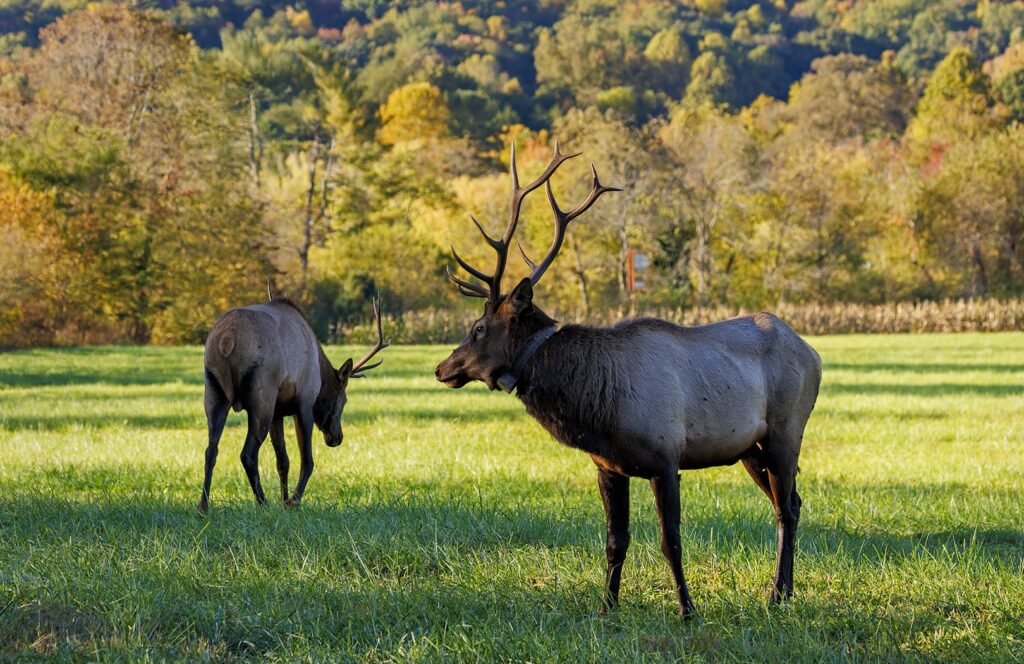
Finally we have elk being reintroduced in the Southern mountains in North Carolina near the Georgia border and it is hoped that they will spread and produce huntable populations in the future.



